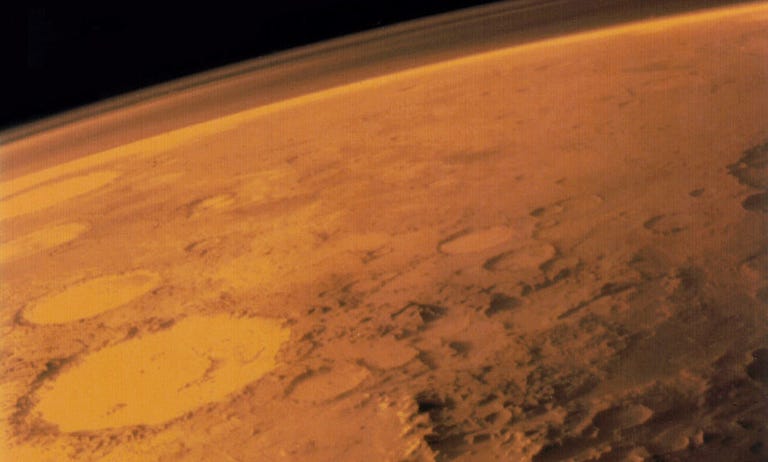
As we continue learning more about Mars, many find themselves very disappointed that we haven't spotted any bug-eyed green aliens living on the planet's surface yet. From the very looks of things, on the top of the planet at least, there isn't much that looks even remotely alive on Mars.
That said, there are some important key life signs, indicators that something might be stirring just outside our reach, which hint that Mars may play host to some kind of unseen life forms. After all, if Mars really is a desolate, dead planet, bereft of any life forms, then where are all the farts coming from?
Methane is an obvious sign of life on planet Earth. Wherever there is life, there is some form of this gas—it's produced naturally from the process of breaking down food for nutrients, and as such, is present across the entire planet. Mars has a trace amount of methane as well, albeit not in the same quantity that we see on our home planet.
This alone isn't necessarily proof that aliens exist on Mars, but it does raise questions about where it comes from, especially considering that the amount of methane present in the atmosphere fluctuates based on the seasons.
A study from NASA has discovered that Mars's northern region experiences an increase in methane in the planet's thin atmosphere during the late summer months, suggesting that there's something on the planet that starts eeking out more noxious, flammable gas when the weather gets warmer.

According to Chris Webster, who works on the Curiosity Rover (and who is in charge of the methane-smelling apparatus on the rover), "The thing that's so shocking here is this large variation. We're left trying to imagine how we can create this seasonal variation."
There are a few explanations for how the methane is getting into the atmosphere. On Earth, this gas is most commonly produced by bacteria that live in the stomachs of the vast majority of animals (including humans), and as such, the logical explanation for methane on Mars is that it's being produced by a bacteria.
As we haven't seen any other indicator of life on the Red Planet, thus far, it's probably important to consider other, less organic ways that methane might occur.
The gas can be created by reactions within some minerals, and could even be the result of meteors landing on the planet and introducing new chemicals into the atmosphere. One of Saturn's moons has an atmosphere that's made up of thick methane, but nobody is suggesting that this is the work of bacteria. One theory that makes sense is that this methane is released in warmer months from underground—whether this means that alien life exists under the rocks (which has been theorized) remains to be seen.
There's also the very real possibility that, thanks to the harsh environment on Mars, alien life on the planet is dormant underground for most of the year, or only flourishes in a slightly warmer climate before almost entirely dying off when the weather cools.

While it's far too soon to start assuming that there's definitely alien life waiting underground on Mars, it would be really thrilling if these methane levels help us to spot bacteria that are active under the planet's dusty exterior.
If nothing else, it'd be fun to say that the first sign of life humanity ever spotted on a foreign world came from a robot smelling alien farts.
